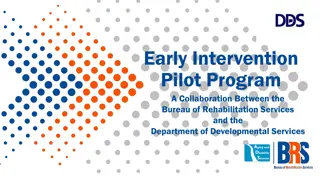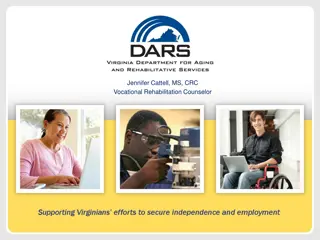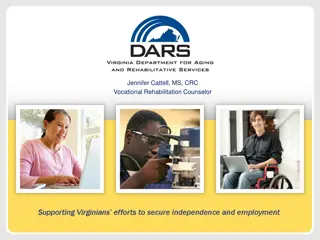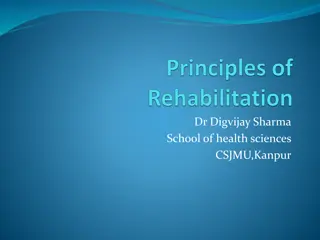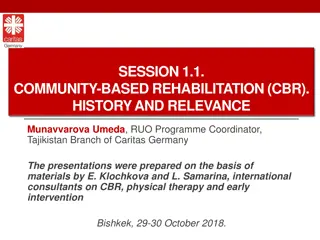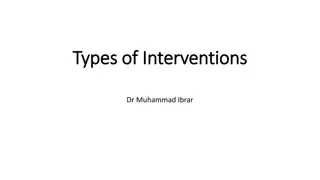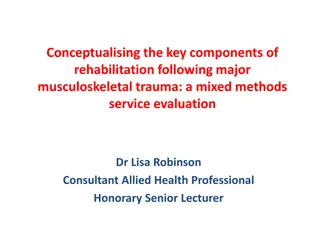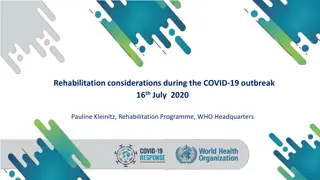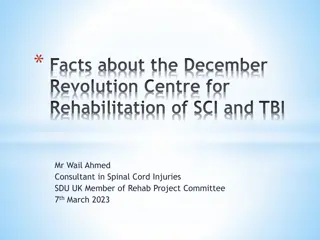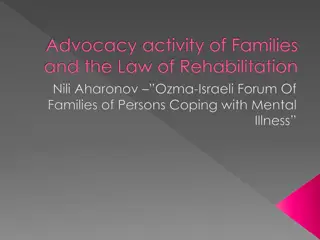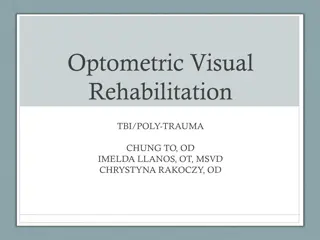Effective Intervention Planning for Rehabilitation Services
The intervention in the DEA programme involves a thorough assessment of user needs, formulation of objectives, and planning based on case management technology. The cycle includes assessment, planning, and actual intervention. Prioritizing high-priority problems is essential for effective outcomes. Problem formulation follows a structured approach to address specific issues identified in the assessment. Selection of priority problems considers user and family member preferences. Limiting intervention to three key issues ensures focused and successful outcomes.
Download Presentation

Please find below an Image/Link to download the presentation.
The content on the website is provided AS IS for your information and personal use only. It may not be sold, licensed, or shared on other websites without obtaining consent from the author. Download presentation by click this link. If you encounter any issues during the download, it is possible that the publisher has removed the file from their server.
E N D
Presentation Transcript
Setting goals for the intervention in the DEA programme Umeda Munavvarova CBR program coordinator, Caritas, Germany Bishkek, 2018
The process of providing rehabilitation services The planning of the intervention starts with a comprehensive assessment of the user's needs on Form 2, which is designed to identify the skills already available, and the strengths and helping factors in the family. The evaluation also identifies the user's problems and functional limitations. Only then do we start formulating long-term and short-term objectives and planning the intervention according to case management technology. While the IPA is being implemented, a re-evaluation is conducted every 3 months to monitor the results of the implementation of the IPA. Once certain objectives have been achieved, the following objectives are formulated and the DIP revised.
Intervention cycle Assessment Assessment of changes Planning of intervention Actual intervention
Compiling a list of problems A list of the user's main problems is compiled according to the identified needs, but for the intervention we choose the highest-priority problems because it is not possible to work with all the problems simultaneously The art of RRS is to choose from a list of problems that will not only lead to a significant improvement in the client's condition, but will also be relevant to the client and his family members
Formula for formulation of problems Who? can't.. What? or... Who has? there is a risk of occurrence of what?
Examples of problem formulation "Anwar can't bear weight on his feet while sitting on a chair... or standing with a support..." "Noza has a high risk of falling when walking on her own" "Lola can't use the toilet on her own because he's in the yard." "Ali has a high risk of hip dislocation because he doesn't sit right."
Criteria for selecting priority problems We choose no more than three issues for intervention When choosing a problem, take into account the wishes of the user and of family members The problems must be numbered as they will form the basis of the intervention objectives and results. When selecting problems, the severity of the condition and the skills already attained should be taken into account Problems must come from interconnected areas, e.g. movement and self-service + communication The resolution of one problem should influence the resolution of another
IPA - intervention objectives Contains actions that are aimed at solving problems The IPR should have a clear description of who will do what and how often? The objectives of the interventionare a mandatory part of the DIP Targets are directly derived from users' problems, i.e. they are the opposite of those problems.
Purpose of intervention It must be: Specific - designed to solve a problem specific to the patient; Measurable - each aim has a specific measurement method, which will help assess the effectiveness; Reachable and relevant - the goal can be achieved within a period of time and refers to the resolution of this particular difficulty; Time-limited - the goal is set for a certain period of time during which achievement of this goal is planned.
The acronym to define these targets is SMART: "Specific." "Measurable." "Achievable." "Relevant." " TimeOriented." The first letters form the word SMART).
How can intervention objectives be formulated? Who? Will do What? When How? For example: In 2 weeks, Anwar will be sitting on a chair unsupported and playing with toys on his knees In 1 month, Noza will not fall over when walking with a stick.
Long-term and short-term goals The goals set for the whole rehabilitation period or for a period of 6 months to 1 year are called long-term goals. Targets for 1, 3 and up to 6 months are called short-term goals. Targets for 1-2 weeks are called tasks.
Training in the skill of setting problem-oriented goals By the example of Varya in different areas of development


